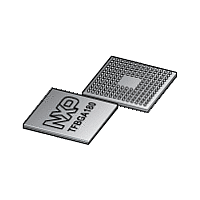LPC2458 NXP Semiconductors, LPC2458 Datasheet - Page 29

LPC2458
Manufacturer Part Number
LPC2458
Description
NXP Semiconductors designed the LPC2458 microcontroller around a 16-bit/32-bitARM7TDMI-S CPU core with real-time debug interfaces that include both JTAG andembedded trace
Manufacturer
NXP Semiconductors
Datasheet
1.LPC2458.pdf
(80 pages)
Available stocks
Company
Part Number
Manufacturer
Quantity
Price
Company:
Part Number:
LPC2458FET180
Manufacturer:
NXP
Quantity:
387
Company:
Part Number:
LPC2458FET180
Manufacturer:
NXP
Quantity:
80 000
Part Number:
LPC2458FET180
Manufacturer:
NXP/恩智浦
Quantity:
20 000
Company:
Part Number:
LPC2458FET180,551
Manufacturer:
MICROCHIP
Quantity:
1 103
Company:
Part Number:
LPC2458FET180,551
Manufacturer:
NXP Semiconductors
Quantity:
10 000
NXP Semiconductors
LPC2458
Product data sheet
7.11.3.1 Features
7.12.1 Features
7.11.3 USB OTG Controller
7.12 CAN controller and acceptance filters
USB OTG is a supplement to the USB 2.0 specification that augments the capability of
existing mobile devices and USB peripherals by adding host functionality for connection to
USB peripherals.
The OTG Controller integrates the Host Controller, device controller, and a master-only
I
controls an external OTG transceiver.
The Controller Area Network (CAN) is a serial communications protocol which efficiently
supports distributed real-time control with a very high level of security. Its domain of
application ranges from high-speed networks to low cost multiplex wiring.
The CAN block is intended to support multiple CAN buses simultaneously, allowing the
device to be used as a gateway, switch, or router between two of CAN buses in industrial
or automotive applications.
Each CAN controller has a register structure similar to the NXP SJA1000 and the PeliCAN
Library block, but the 8-bit registers of those devices have been combined in 32-bit words
to allow simultaneous access in the ARM environment. The main operational difference is
that the recognition of received Identifiers, known in CAN terminology as Acceptance
Filtering, has been removed from the CAN controllers and centralized in a global
Acceptance Filter.
2
•
•
C interface to implement OTG dual-role device functionality. The dedicated I
•
•
•
•
•
•
•
•
•
•
•
Two downstream ports.
Supports per-port power switching.
Fully compliant with On-The-Go supplement to the USB 2.0 Specification, Revision
1.0a.
Hardware support for Host Negotiation Protocol (HNP).
Includes a programmable timer required for HNP and Session Request Protocol
(SRP).
Supports any OTG transceiver compliant with the OTG Transceiver Specification
(CEA-2011), Rev. 1.0.
Two CAN controllers and buses.
Data rates to 1 Mbit/s on each bus.
32-bit register and RAM access.
Compatible with CAN specification 2.0B, ISO 11898-1.
Global Acceptance Filter recognizes 11-bit and 29-bit receive identifiers for all CAN
buses.
Acceptance Filter can provide FullCAN-style automatic reception for selected
Standard Identifiers.
FullCAN messages can generate interrupts.
All information provided in this document is subject to legal disclaimers.
Rev. 4 — 1 September 2011
Single-chip 16-bit/32-bit micro
LPC2458
© NXP B.V. 2011. All rights reserved.
2
C interface
29 of 80

















